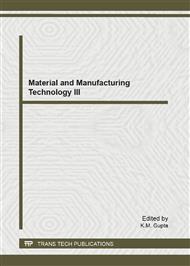p.484
p.489
p.495
p.500
p.507
p.511
p.516
p.521
p.527
Gear Faults Diagnosis Based on Nonlinear Blind Source Separation
Abstract:
The nonlinear blind source separation is a practical and effective method in processing mechanical vibration signal, but it has the limitation which learning rate is fixed. It will take a long time for iterative parameters to get convergence. In this paper, a variable rate nonlinear BSS is proposed. The learning rate of the algorithm is adjusted based on iterative error in the different stopping iterating time and inverse proportion. The proposed algorithm increasing the efficiency of the nonlinear BSS and de-noising the vibration signals. Experiment on gears shows that the signal gained by the method more impersonality represents the gear condition
Info:
Periodical:
Pages:
507-510
Citation:
Online since:
July 2012
Authors:
Price:
Сopyright:
© 2012 Trans Tech Publications Ltd. All Rights Reserved
Share:
Citation:


